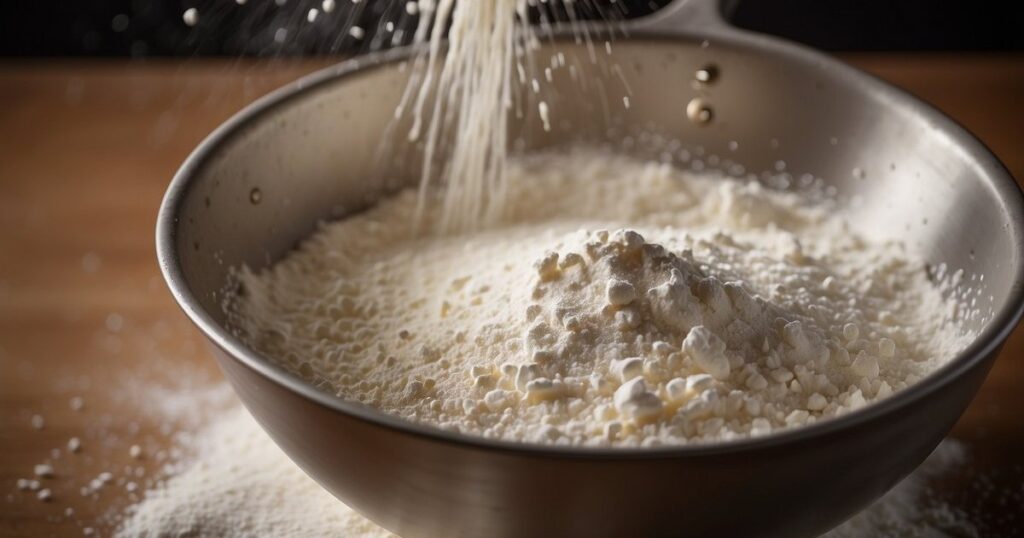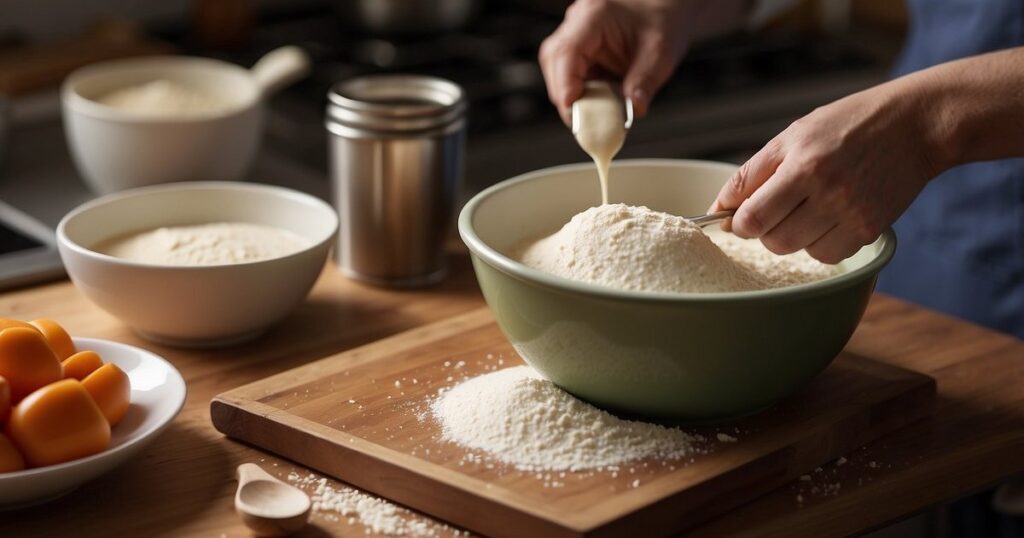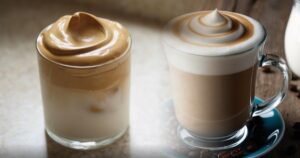Bisque Foam Recipe: Gourmet Guide to Restaurant-Quality Dishes
FastGas Blog
Transform traditional bisque into a light and airy foam that will amaze your taste buds and elevate any dish to restaurant quality. By incorporating modern techniques such as using FastGas whipped cream chargers, you can create a bisque foam that is not only unique but also enhances the classic flavours of a rich seafood bisque. This method ensures that the bisque retains its essence while gaining a new, elegant texture that can be used to garnish a variety of dishes.
Bisque foam captures the depth and complexity of the original soup in a surprisingly delicate form. By blending ingredients like rice, tomato paste, and cream and charging them with the Fast-gas system, the transformation takes place seamlessly. This technique brings a luxurious touch to your homemade creations, making every meal feel like a fine dining experience.
Explore the creative potential of bisque foam and bring a touch of sophistication to your kitchen. Whether you’re preparing a dish for a special occasion or simply looking to experiment with novel cooking methods, mastering this recipe will undoubtedly leave a lasting impression on your guests.
The Fundamentals of Bisque
Attention to detail is paramount when crafting a bisque, ensuring a rich and flavorful result. Here, you will find important facets like ingredient quality, the varied types of bisques, and the essential steps to creating a mouth-watering base.
Selecting Quality Ingredients
To achieve a superior bisque, start with fresh, high-quality ingredients. Fresh seafood such as shrimp, crab, and lobster offers a pronounced flavour that elevates the soup. Use fresh vegetables for your mirepoix to give depth to the taste. Additionally, select creams and stocks (seafood, chicken, or vegetable) that complement your main ingredient.
Tomato paste adds a vibrant colour and a tangy note, while a good quality sherry or white wine enhances the complexity of the flavours. Remember, each ingredient should serve a purpose in building the bisque’s unique character.
Understanding Bisque and Its Varieties
Bisque is a creamy, smooth, and flavourful soup traditionally made from shellfish. Common varieties include shrimp bisque, lobster bisque, and crab bisque. Each type carries distinctive flavour profiles, yet they share a foundation of richness and smoothness.
Beyond seafood, you can also find bisques made with other main ingredients like pumpkin or tomato, each bringing its twist to the classic base. This versatility makes bisque a favourite among many and allows for experimenting with different ingredients.
Preparing the Base
Creating the perfect bisque starts with a well-prepared base. Begin by melting butter in a stockpot and adding mirepoix (onions, carrots, celery). Cook until the vegetables are soft and translucent. Stir in tomato paste to enhance the flavour and add a slight acidity.
Mix in flour to incorporate a roux, which will help thicken the soup. Gradually add your chosen stock—seafood for traditional bisques or chicken/vegetable stock for variations. Simmer this mixture to allow the flavours to meld.
Finally, blend the base until smooth, ensuring no lumps remain. Add heavy cream for a rich and velvety texture, and adjust the seasoning to taste. Using a cream dispenser can add a sophisticated foamy touch to your bisque, making it a visually appealing and delightful dish.
Mastering Bisque Foam Technique
Bisque foam is a delightful way to elevate the presentation and flavour of your dishes, imparting a unique texture and visual appeal. The following sections will guide you through creating the perfect foam, using modern culinary techniques, and tips for plating and presentation.
Creating the Perfect Foam
To create a perfect bisque foam, start by preparing your bisque with high-quality ingredients. A blend of prawns, tomato paste, and rice offers a rich base. After cooking for an hour, blend the mixture until smooth. Add a touch of cream for a luscious texture.
Pour the mixture into a cream dispenser (siphon) and charge it with nitrous oxide to aerate the liquid, forming tiny bubbles throughout. For stability, add a stabiliser like xanthan gum. This helps your foam maintain its structure and prevents it from collapsing too quickly. Using an immersion blender can also ensure an even mixing of all the ingredients.
Incorporating Modern Culinary Foams
Modern foam techniques utilise various tools and ingredients to achieve the desired texture and stability. A siphon is essential for creating light, airy foams. By charging the siphon with nitrous oxide, you introduce air, forming a soft foam.
When working with culinary foams, understanding the properties of different stabilisers is crucial. Xanthan gum, for instance, provides a consistent structure. Other foaming agents, like soy lecithin, can also be used for different textures. Experimenting with these can let you discover new consistencies and flavours, enhancing your skills.
Plating and Presentation Tips
Plating bisque foam involves careful consideration of texture and presentation. Use the foam as a garnish to bring a light, airy component to your dish. This can complement heavier elements and add visual intrigue.
When serving as an appetiser or starter, ensure the foam is vibrant and neatly applied. A precise dollop using the siphon can make a substantial difference. Pair the bisque foam with a main dish that complements its rich flavour—seafood, for example, works beautifully.
Attention to detail will impress your guests, making your culinary creations stand out. Use fresh herbs, microgreens, or a drizzle of oil to enhance the final presentation, ensuring each bite is both pleasing to the eye and delightful to the palate.
Frequently Asked Questions
Here are some answers to common questions about creating bisque foam and using culinary foams in general.
How can one create culinary foam using household items?
Using household items, you can create culinary foam by incorporating agents such as gelatin, lecithin, or egg whites into your liquid base. Whisking or blending these mixtures at high speed can produce a stable foam.
What are some advanced recipes for molecular gastronomy foams?
Advanced recipes often use soy lecithin, which has emulsifying properties. For example, you may mix beet juice with soy lecithin and use an immersion blender to aerate it into a foam.
Is it possible to prepare espuma without utilising a siphon?
Yes, it is possible. You can use immersion blenders or whiskers to achieve similar results. While these methods might produce different textures, they are effective alternatives.
Could you provide some techniques for utilising a whipped cream dispenser beyond its traditional use?
A whipped cream dispenser can be used to create flavoured foams, sauces, or even carbonated drinks. Infusing fruit juices or mixing dairy with herbs and then dispensing can offer a unique culinary experience.
What steps are involved in making foam for culinary purposes?
Start with a liquid base and add stabilisers like gelatin or lecithin. Blend the mixture until it becomes aerated and reaches the desired consistency. Chill the mixture before serving for better texture and stability.
In what ways can one employ a whipped cream dispenser to craft cocktails?
For cocktails, you can use a whipped cream dispenser to create foamy toppings or infused spirits. Fill the dispenser with your cocktail mix, charge it with CO2, and dispense to create a beautifully foamed drink.







